As parents, we often find ourselves measuring milestones against a yardstick of expectations, eagerly waiting for the day our little ones will start crawling, walking, or speaking their first words. By the time babies reach the age of ten months, most are on the move, exploring their surroundings with unstoppable curiosity. However, if your child is contentedly stationary while others are scooting about, it’s natural to feel a twinge of concern. In this article, we’ll delve into the topic of crawling—or the lack thereof—at ten months old. What does it mean for your baby’s development, and when should you consider seeking advice? Join us as we explore the milestones, variations, and professional insights that can help ease your mind and guide you in these formative years.
Signs of Developmental Milestones and What They Mean
Developmental milestones serve as essential markers for tracking a child’s growth, encompassing various physical and cognitive skills. At 10 months, many infants typically demonstrate a variety of movements, including sitting up independently and showing interest in reaching for toys. It’s important to understand that while crawling is often expected around this age, some babies may exhibit alternative means of mobility. The absence of crawling may not necessarily indicate a concern, as development varies widely among individual children. Some signs that are pertinent to consider include:
- Alternative Movement Styles: Some infants may prefer rolling, scooting, or even “bottom shuffling” over traditional crawling.
- Physical Strength: Notice if your baby can push up to a sitting position or bear weight on their legs when prompted.
- Localization of Interest: Observe if they reach for objects and pivot in their seated position to engage with their surroundings.
While every child develops at their own pace, parental observation is key to identifying any potential concerns. It’s advisable to maintain regular check-ups with a pediatrician, who can provide insights based on developmental screens. If a baby demonstrates other delays or lacks strength and coordination, additional evaluations might be warranted. Consider the following as further indicators of healthy development at this stage:
| Milestone | What It Indicates |
|---|---|
| Pulling Up to Stand | Strength and motivation to explore |
| Reaching for Toys | Hand-eye coordination development |
| Sitting Steady | Core strength and balance |
Understanding the Range of Normal Motor Skills
Every baby is unique, and their development can vary widely from one to another. Typically, by the age of ten months, many infants demonstrate a range of motor skills that include not just crawling but also sitting up, pulling themselves to stand, and even walking with assistance. However, some babies may take a bit longer to hit these milestones. It’s important to recognize that **normal motor skill development can differ by several months**. Parents should consider the full spectrum of their child’s abilities and growth rather than focusing solely on whether they are crawling by a certain age. Here are some factors that contribute to normal motor skill development:
- Genetics: Family traits can influence motor development speeds.
- Environment: Babies exposed to various physical activities may progress differently.
- Temperament: Some babies may be more cautious or curious, affecting their mobility.
To better understand where your child might fit within the normal range, it can be helpful to compare their achievements, not just to crawling, but to other significant motor milestones. Below is a simple table that illustrates common milestones around the ten-month mark:
| Milestone | Age Range (Months) |
|---|---|
| Sitting Independently | 6-8 |
| Crawling | 7-10 |
| Pulling Up to Stand | 8-10 |
| Walking with Assistance | 9-11 |
Ultimately, while some developmental comparisons can provide context, it’s essential for parents to focus on their child’s overall progress and consult with pediatricians if any concerns arise. Early intervention, when necessary, can make a significant difference in helping infants catch up to their peers.
Encouraging Movement: Techniques and Activities to Try
Movement is essential for a baby’s development, and there are several engaging ways to encourage this important milestone. Start by creating a safe play area filled with stimulating toys that promote movement. Consider **tummy time** as a foundation, where babies strengthen their muscles while interacting with colorful objects placed just out of reach. Here are a few activities that can make tummy time more enticing:
- Mirror Play: Place a mirror in front so they can see their reflection.
- Rolling Toys: Use soft balls or toys that roll to encourage reaching and rolling.
- Music Movement: Play music and encourage them to wiggle and move to the rhythm.
In addition to tummy time, consider incorporating structured play sessions to foster mobility. Interactive activities such as **crawling races** with siblings or caregivers can make movement fun and engaging. Setting up small obstacles using cushions or soft toys can motivate your baby to explore their surroundings. To track your baby’s progress, you might find the following table helpful:
| Activity | Objective | Age Recommendation |
|---|---|---|
| Crawl Toward Toys | Encourages crawling | 8-12 months |
| Obstacle Navigation | Boosts confidence and strength | 10+ months |
| Interactive Music | Promotes movement and rhythm | Any age |
When to Seek Professional Advice and What to Expect
Every baby develops at their own pace, but if your little one isn’t crawling by 10 months, it’s natural to start wondering if something might be off. There are several signs that indicate you should consider seeking professional advice, including:
- Limited mobility or reaching milestones significantly later than peers
- Not showing interest in toys or surroundings
- Difficulty adjusting to tummy time or any discomfort with movement
- Muscle stiffness or unusual body posture
When you decide to consult a pediatrician or developmental specialist, expect a comprehensive evaluation. They may conduct a physical examination to assess muscle tone, strength, and coordination. You might also be asked about your child’s overall development, including:
| Area of Development | Questions Asked |
| Motor Skills | Does the baby reach for objects? |
| Cognitive Development | Does the baby respond to their name? |
| Social Interactions | Is the baby engaging with others? |
These discussions and assessments will help identify if there’s a concern that needs addressing or if your baby is simply taking a little extra time to reach this milestone. Trust your instincts as a parent, and don’t hesitate to seek reassurance from professionals. It’s always better to be informed and proactive about your child’s development.
Q&A
Q&A: Baby Not Crawling at 10 Months – Should You Be Concerned?
Q1: At what age do babies typically start to crawl?
A1: Most babies start crawling between 6 to 10 months, but there’s a wide range of normal development. Some babies may even skip crawling altogether!
Q2: If my baby isn’t crawling by 10 months, does that mean there’s a problem?
A2: Not necessarily. Every child develops at their own pace. Some babies may be focusing on other skills like standing, cruising, or even walking. If there are no other concerns, it may simply be a matter of individual development.
Q3: What milestones should I look for if my baby isn’t crawling?
A3: Besides crawling, observe if your baby is reaching for toys, rolling over, or sitting up independently. These are all signs of healthy development. Also, look for social interactions, like smiling or babbling, as part of their growth.
Q4: How can I encourage my baby to crawl?
A4: Creating a safe, open space for your baby to explore is key. Tummy time is essential; try placing toys just out of reach to motivate them. Encourage movement by getting down on their level and engaging with them!
Q5: When should I be worried enough to talk to a pediatrician?
A5: If your baby shows no movement or interest in mobility by 10 months, or if there are other red flags like lack of eye contact or responsiveness, it’s wise to consult your pediatrician. They can provide guidance and investigate if needed.
Q6: Are there alternative ways babies develop movement instead of crawling?
A6: Absolutely! Some babies may move in unique ways, such as scooting on their bottoms or rolling, and still be perfectly normal. The important thing is that they are making progress in their motor skills, however they choose to do so.
Q7: Can my baby’s lack of crawling affect their development later?
A7: Not really! While crawling can aid in developing coordination and strength, many children who don’t crawl go on to develop normally. Each child has their own path, and skipping crawling doesn’t predict future difficulties.
Q8: What can I do if I’m feeling anxious about my baby’s development?
A8: It’s completely normal to feel concerned. Try to connect with your pediatrician for reassurance. Sharing experiences with other parents or participating in parenting groups can also provide comfort and perspective.
Q9: Is crawling essential for learning how to walk?
A9: Crawling helps develop the muscles needed for walking, but it’s not a strict prerequisite. Babies who skip crawling will often find their own ways to build strength and coordination in preparation for walking.
Q10: How can I better understand my baby’s developmental journey?
A10: Observing your baby closely and celebrating their unique milestones can foster a positive perspective. Remember, development is not a race. Focus on the joy of each little achievement, and trust your instincts as a parent!
Concluding Remarks
while the journey of development varies from one baby to another, the notion of crawling — or the lack thereof — can evoke a range of emotions in parents. It’s important to remember that every child’s path to mobility is unique, influenced by a tapestry of factors including temperament, physical strength, and even individual interests. If you find yourself wondering about your little one’s milestones, take a moment to observe and appreciate their growth in all its forms. Open communication with your pediatrician can provide reassurance and guidance tailored to your baby’s specific needs. After all, whether it’s crawling, rolling, or simply scooting around, each stage is a remarkable step towards exploring the world. Trust the process, and know that your baby is developing at their own pace, ready to surprise you in ways you might not yet imagine.


